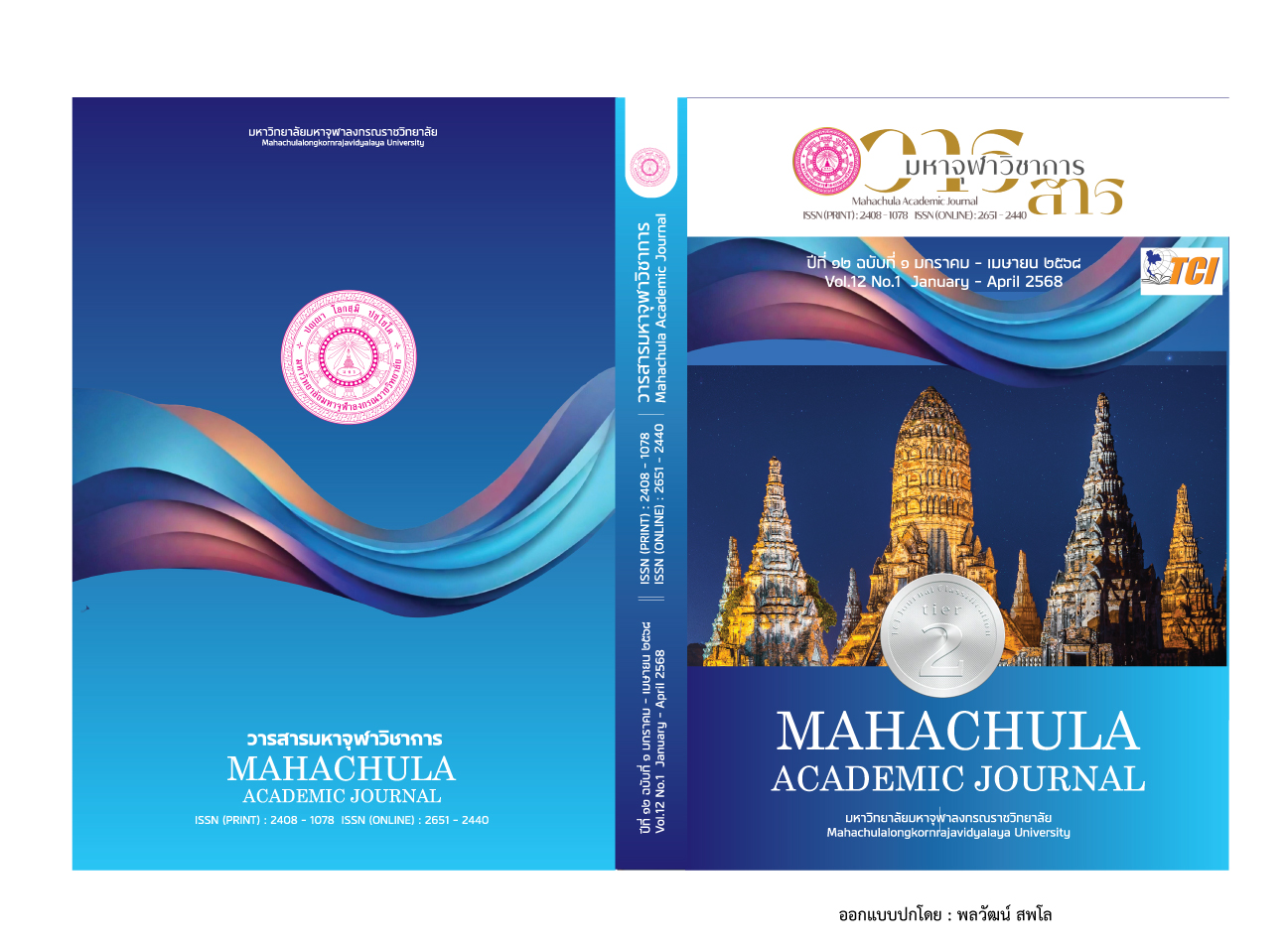The term “Dhammacakkhu”: An Explanation through Ludwig Wittgenstein's language games
Main Article Content
Abstract
In the Pali Canon, the term dhammacakkhu specifically refers to the sotāpattimagga. However, in the commentaries and subcommentaries, the definition of dhammacakkhu varies. Some sources indicate that it refers to the sotāpattimagga, while others define it as the Three Paths and Three Fruits (magga 3 phala 3) or the Four Paths and Four Fruits (magga 4 phala 4). However, It can be argued that the meaning of dhammacakkhu in Buddhist scriptures is ambiguous and lacks objectivity. Therefore, the purpose of this paper is to explain the term dhammacakkhu using Ludwig Wittgenstein's of language games to avoid such criticism. The article is divided into two parts:
(1) Wittgenstein's language games and (2) the explanation of the term dhammacakkhu through Wittgenstein's language games. The study collects definitions of dhammacakkhu from the Pali Canon, commentaries, subcommentaries, and Wittgenstein's language games as presented in Philosophical Investigations, and then explains the term dhammacakkhu through Wittgenstein's language games. The study reveals that the term dhammacakkhu takes on different meanings depending on the context in which it is used. It has been constructed to explain the attainment of different levels of awakening. Upon examining the meanings of dhammacakkhu in various contexts, it becomes apparent that the definitions are nearly indistinguishable, as they all refer to the realization of dhamma. However, a more detailed analysis reveals that dhammacakkhu differs in the way it relates to the eradication of defilements in different contexts. Despite these differences, there is a common feature: the state of dhamma that eradicates defilements is similar in all instances. Furthermore, since the meaning of dhammacakkhu is context-dependent, it may be interpreted as referring to the sotāpattimagga in one context, but in another context, it may be interpreted as referring to the Three Paths and Three Fruits (magga 3 phala 3) or the Four Paths and Four Fruits (magga 4 phala 4).
Article Details

This work is licensed under a Creative Commons Attribution-NonCommercial-NoDerivatives 4.0 International License.
References
มหาจุฬาลงกรณราชวิทยาลัย. พระไตรปิฎกภาษาไทย ฉบับมหาจุฬาลงกรณราชวิทยาลัย.กรุงเทพมหานคร: โรงพิมพ์มหาจุฬาลงกรณราชวิทยาลัย, ๒๕๓๙.
_________. ธมฺมสงฺคณีมูลฏีกา. กรุงเทพมหานคร: โรงพิมพ์มหาจุฬาลงกรณราชวิทยาลัย, ๒๕๓๘.
_________. สุมงฺคลวิลาสินิยา นาม ทีฆนิกายฏฺฐกถาย สีลกฺขนฺธวคฺควณฺณนา (ปโม ภาโค). กรุงเทพมหานคร: โรงพิมพ์วิญญาณ, ๒๕๓๒.
_________. อรรถกถาภาษาไทย พระวินัยปิฎก สมันตปาสาทิกา ภาค ๓. กรุงเทพมหานคร: โรงพิมพ์มหาจุฬาลงกรณราชวิทยาลัย, ๒๕๖๐.
_________. อรรถกถาภาษาไทย พระสุตตันตปิฎก ทีฆนิกาย สีลขันธวรรค. กรุงเทพมหานคร: โรงพิมพ์มหาจุฬาลงกรณราชวิทยาลัย, ๒๕๕๗.
_________. อรรถกถาภาษาไทย พระสุตตันตปิฎก สังยุตตนิกาย สฬายตนวัคค-มหาวารวัคควัณณนา สารัตถัปปกาสินี ภาค ๓. กรุงเทพมหานคร: โรงพิมพ์มหาจุฬาลงกรณราชวิทยาลัย, ๒๕๕๓.
Agetue, K. N. “Wittgenstein’s concept of language game: A critical discourse”. Abraka Humanities Review. Vol.12 No. 1 (2022): 106-114.
Amberg, J. S., & Vause, D. J. American English: History, Structure, and Usage. Cambridge: Cambridge University Press, n.d..
Wittgenstein, L. Philosophical Investigations. Translated by G.E.M. Anscombe. 3rd edition. Oxford: Blackwell Publishing, 2001.
Xia, Y. “A Comparative Analysis of Early and Late Ludwig Wittgenstein’s Philosophical Thoughts”. Proceedings of the 2nd International Conference on Social Psychology and Humanity Studies, (2024): 38-42.
Yule, G. The Study of Language. 4th ed.. Cambridge: Cambridge University Press, 2010.
Stanford Encyclopedia of Philosophy. Ludwig Wittgenstein. [online]. Retrieved from https://plato.stanford.edu/entries/wittgenstein/ [October 31, 2024].

